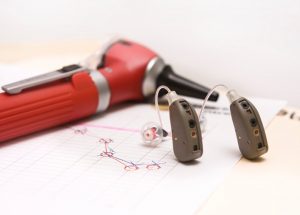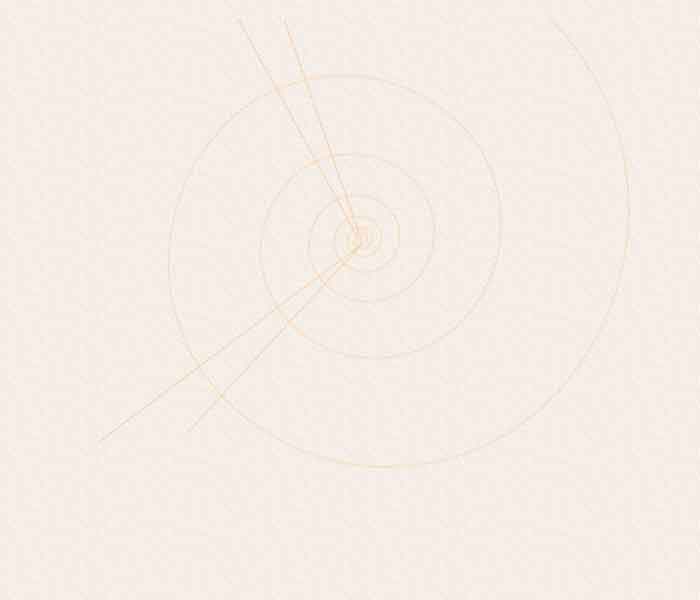
Conductive Hearing Loss occurs when sound energy is not conducted well or effectively through your ear canal, by your eardrum or the middle ear bones to the inner ear. You may lose the ability to hear all sound levels or faint sounds. Conductive hearing loss can be treated with a variety of medical and surgical techniques, depending on the cause of your particular hearing loss.
Conductive hearing loss is a reduction in hearing ability based on the impairment or loss of the conductance (‘traveling’) of sound waves across any part of the external, middle or inner ear. Sound waves travel through the outer ear and the ear canal and cause vibrations in the eardrum and bones of the middle ear. These stimulate the cochlea, a complex structure in the inner ear that transmits the vibrations as information to the auditory nerve. Damage to any of the structures involved in this process (up to the auditory nerve) may lead to conductive hearing loss. This condition may be permanent, but can be treated using a variety of products and strategies. It may affect one or both ears
Conductive hearing loss may be categorized according to its general cause; i.e. as ‘acquired’ or ‘congenital’ conductive hearing loss. People with congenital hearing loss have genetic mutations that predispose them to this type of deafness. Congenital conditions can involve deformities of the outer ear or the absence of ear canals. People with this condition often develop hearing loss at an early age. Acquired conductive hearing loss is associated with damage to the relevant parts of the ear sustained by non-genetic, external or environmental factors. It may be associated with infection of the outer or middle ear, mechanical damage to the outer, middle or inner ear, or with head trauma in some cases.
Fluid in the middle ear from colds or allergies, ear infections (otitis media), perforated eardrums, benign tumors, Conductive hearing loss test paper resultshead trauma, and many other situations
Otosclerosis, a condition in which the third little middle ear bone (stapes) of hearing is unable to vibrate to transmit sound energy to the inner ear (cochlea). Conductive hearing loss from otosclerosis can be managed with a hearing aid or surgery
Other congenital malformations of your outer ear, ear canal or middle ear
Eustachian tube problems, frequently after flying with an upper respiratory infection. Some of the other causes of Eustachian tube blockage are tumor, allergies, and chronic sinusitis
Absence of bone in the semicircular canals of balance in the inner ear
Genetic bone metabolism disorders, such as Paget’s disease
A foreign object lodged in your ear or ear canal
Impacted ear-wax in the ear canal, particularly when pushed in by q-tips

Conductive hearing loss may be associated with mild (26-40 dB) to severe (71-90dB) hearing impairments, often with the loss of higher frequencies. This condition also causes an increased discrepancy between stimulation of the eardrum by sound waves (i.e. air conduction) and that of sound waves conducted through the skull (bone conduction).
Conductive hearing loss may be compensated for using a range of conventional hearing aids. Modern forms of hearing aid include bone-conduction hearing aids, which use a small implant to ‘pick up’ sound waves traveling toward the skull and conduct them to auditory centers. These may be implanted through the skin into the part of the skull near the ear. They are made of medical-quality metals such as titanium, which integrate into the bone and thus act as an alternative route for wave conductance. Bone-conduction aids that do not need to be implanted and are secured with the handles of spectacles or a headband, are also available. These are regarded as more useful for people with hearing loss thresholds above 35dB.
Damage to the outer or middle ear may be corrected through surgery. This may restore partial to full conductive hearing ability. Ear infections may be treated with medication such as anti-infectives or antibiotics, depending on the micro-organism causing ear damage. Chronic middle ear infections may also require surgery, to repair or restore the conductance of the eardrum.
Modern techniques make it possible to cure or at least improve the vast majority of cases involving problems with the outer or middle ear. Dr. Kohan treats conductive hearing loss using a variety of techniques, always selecting the treatment best suited for you.
Advanced study in Otorhinolaryngology to detect sound level differences – http://www.ncbi.nlm.nih.gov/pubmed/21389708
Medical Study to determine prevalence of hearing loss in child with down syndrome- http://www.ncbi.nlm.nih.gov/pubmed/25881605
Laryngoscope study to determine the hearing affects after procedures on the canal wall- http://www.ncbi.nlm.nih.gov/pubmed/25778997
Dr. Kohan has been honored 20 years running as a Castle Connolly Top Doctor.

Dr. Kohan is the recipient of the Patients’ Choice Award 5 years in a row. An award given to less than 1% of doctors.
